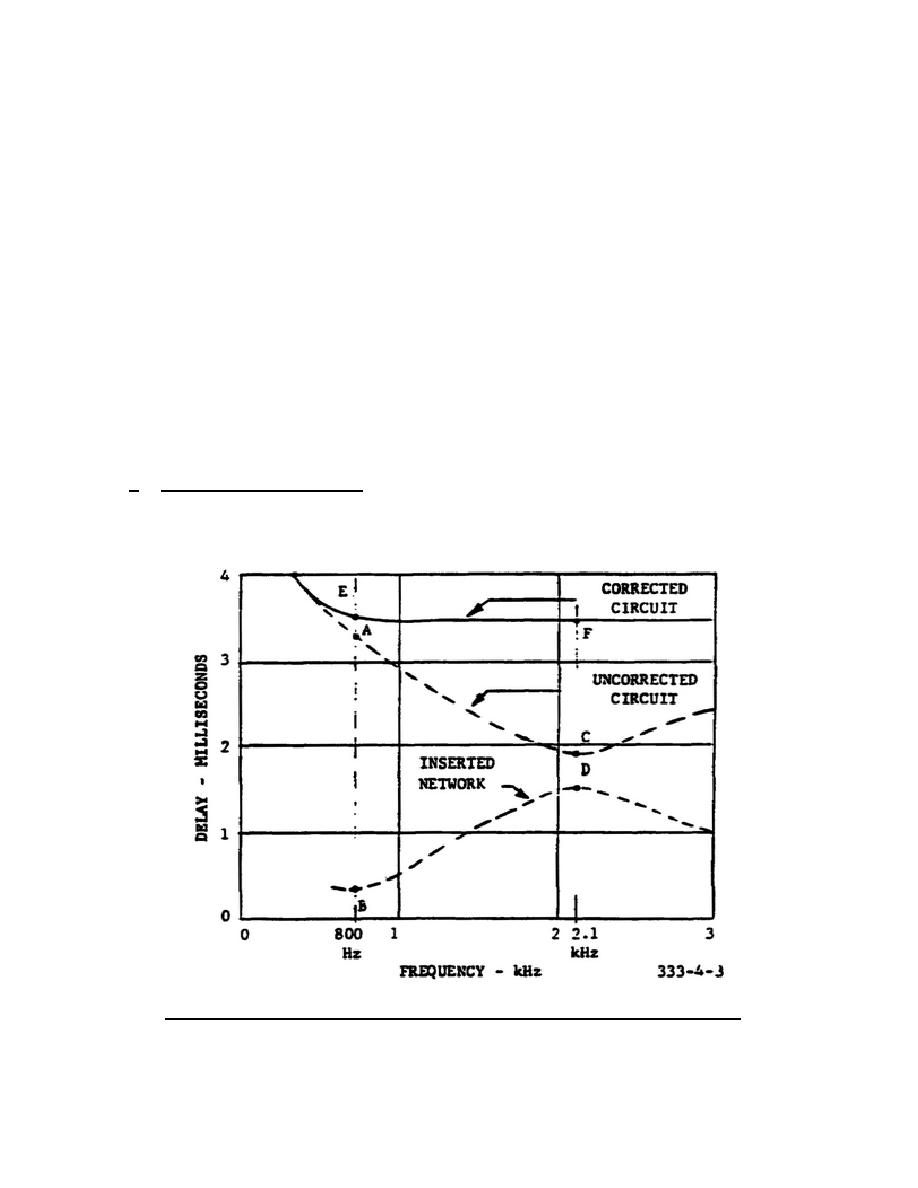
(4) The overall loss of the equalizer is unknown and must be compensated
by gain of an amplifier. To minimize the development of harmonics,
a fixed-gain amplifier usually follows the output circuit of the
equalizer. It is therefore necessary to use an attenuator between
the equalizer output and the amplifier input to adjust the output
level of the amplifier to the proper value.
(5) Normally only one amplifier is needed to amplify the full range of
voice frequencies.
With this arrangement, the amplifier makes no
change in the frequency characteristic or response of the line and
equalizer; it simply raises the level of any frequencies present.
Although the amplitude-frequency type of equalizer has the advantage
of simplicity, levels of narrow frequency bands within the voice-
frequency range cannot be adjusted because of the single amplifier
used.
4-3. COMBINATION EQUALIZERS
A combination equalizer is designed for both amplitude-frequency and
envelope-delay compensation.
Circuit conditioners will use combination
equalizers to condition telephone lines for data transmission.
a. Delay Characteristics.
A graph of delay characteristics is shown in
figure 4-3.
The delays at different frequencies in the voice range of a
selected telephone line are indicated by the uncorrected circuit curve.
To
minimize distortion of data signals passing through this telephone line, it is
Figure 4-3.
Delay characteristics of a combination equalizer.
48



 Previous Page
Previous Page
